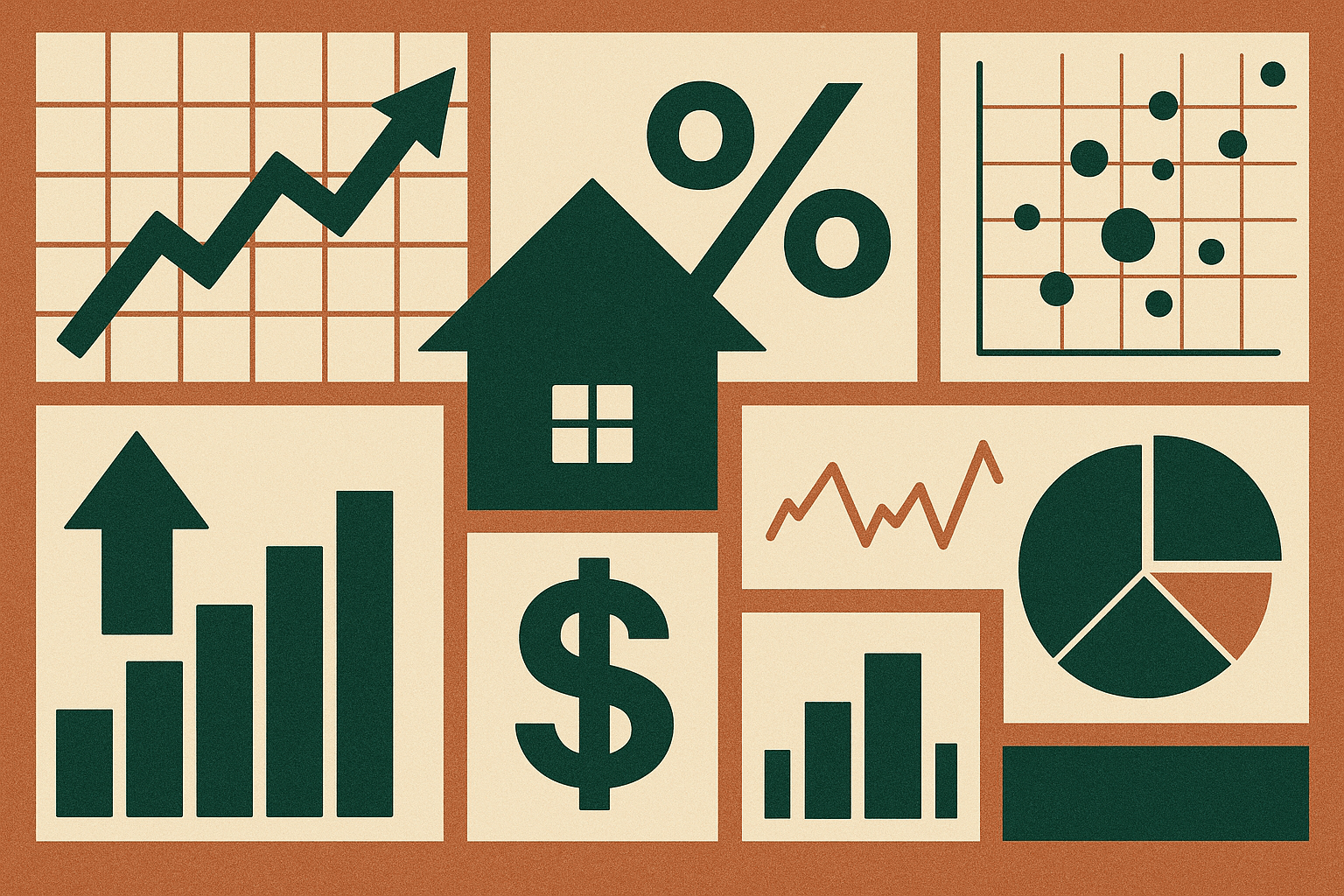Invest
Hidden cost, higher prices: Why a council fee fight matters for Australia’s housing pipeline
Invest
Hidden cost, higher prices: Why a council fee fight matters for Australia’s housing pipeline
A dispute between the Housing Industry Association and Goulburn Mulwaree Council over development cost estimates is more than a local skirmish—it spotlights a systemic pricing lever that can compound housing affordability pressures.
Hidden cost, higher prices: Why a council fee fight matters for Australia’s housing pipeline
A dispute between the Housing Industry Association and Goulburn Mulwaree Council over development cost estimates is more than a local skirmish—it spotlights a systemic pricing lever that can compound housing affordability pressures.

When Estimated Development Costs (EDCs) creep up, percentage-based levies and bracketed application fees rise in lockstep. In a market already grappling with 25‑year‑low land sales and elevated build costs, opaque fee mechanics become a material business risk. Early movers that industrialise cost governance can turn compliance into competitive advantage.
The signal for business isn’t subtle: cost definitions buried inside planning paperwork can move real money. The Housing Industry Association’s allegation that a NSW council is inflating Estimated Development Costs (EDCs)—by counting items such as promotional discounts and premium landscaping—goes to the heart of how development fees and levies are set. Because many charges scale with the EDC, every extra dollar embedded in the estimate multiplies across application fees, percentage-based levies and, at times, infrastructure contributions. In a thin-margin, rate-sensitive market, that’s not administrative trivia—it’s a margin lever.
The mechanism: how EDCs translate into cash
In most NSW councils, the EDC guides two pricing pathways: bracketed development application fees and percentage-based levies (for example, fixed rate contributions calculated as a share of the project cost). Applicants typically submit a cost summary or a quantity surveyor’s report. Councils can review, request amendments, or apply their own view of costs. The policy intent is sound—align contributions with project scale—but the execution depends on a clear, consistent definition of what should be in or out of scope.
That definition matters. If a detached home’s EDC is $600,000, a 1% levy equates to $6,000. Inflate the EDC by $30,000 through items like marketing rebates or non-essential landscaping and that’s an extra $300 on the levy alone, potentially plus higher DA fees if a threshold is crossed. Multiply across estates and volume builders, and the aggregate impact runs to six or seven figures annually.

Market context: a fragile pipeline amplifies fee friction
The timing is awkward. Industry data indicates national residential land sales dropped to around 8,250 lots in the March 2025 quarter—a 25‑year low—amid elevated input costs and persistent planning delays. Construction cost inflation, while easing from its peak, has left a higher base that many builders are still digesting. Financing costs remain materially above pre‑pandemic levels, and approval timelines continue to stretch. In this environment, any incremental, non-productive cost behaves like a tax on delivery, pushing projects to the margin of viability and putting upward pressure on end prices.
Developers and volume builders are already reworking feasibilities to reflect tighter sales absorption and higher contingency. An unmodelled uplift in fees via EDC reclassification erodes contingency buffers, complicates lender discussions, and risks triggering price rises that suppress demand further—a negative feedback loop for the pipeline.
Two sides of the ledger: accuracy vs overreach
There is a legitimate balancing act. Councils are under pressure to fund local infrastructure and to police underestimation of costs that would short-change public amenities. Many planners argue that rigorous, comparable EDCs protect the ratepayer and ensure equitable contributions across projects. Industry counterparts counter that broadening EDC scope to include marketing incentives, finance, contingency above reasonable levels, furniture, or speculative landscape upgrades distorts the fee base away from construction value.
Quantity surveyors typically advocate a disciplined approach: include direct construction costs and reasonable preliminaries; exclude finance, stamp duty, legal fees, marketing, and post-contract incentives. Clear, auditable definitions reduce disputes and rework on both sides.
Business impact: from line item to enterprise risk
For developers and builders, EDC drift is no longer a back-office nuisance—it’s a P&L risk. At meaningful scale, a 3–5% overstatement in EDCs across a portfolio can strip 20–50 basis points from gross margin once levies, bracketed fees, and schedule slippage are factored in. It also introduces volatility into cash flow forecasting, undermining drawdown planning and presales pricing discipline. For lenders, opaque fee formation is a red flag that can slow credit approvals or trigger higher covenants. For councils, perceived overreach risks reputational damage, legal challenge, and ultimately state intervention or standardisation that curtails local discretion.
Competitive advantage: industrialise cost governance
Early adopters are moving beyond ad hoc DA cost summaries to a repeatable, defensible framework:
- Standardised cost libraries by dwelling type, location, and specification, maintained with current market rates.
- Independent quantity surveyor sign-off for threshold projects and a documented inclusion/exclusion matrix tied to regulation.
- Pre-lodgement alignment with councils via checklists that surface grey areas (e.g., landscaping tiers, rebates, provisional sums) before submission.
- Scenario modelling that quantifies fee sensitivity to EDC changes, enabling pricing and contingency decisions before marketing launch.
- A dispute playbook: internal review, independent verification, and escalation paths, with cycle-time targets to avoid approval drift.
Builders that can evidence probity and speed through clear EDC documentation gain time-to-approval advantages and lower working capital drag. Councils that publish transparent EDC guidance and acceptance criteria become development-friendly jurisdictions, attracting investment.
Implementation reality: make it measurable, make it digital
Practical steps are available now:
- Codify EDC policy internally: what is included, excluded, and why. Train estimators and development managers to the standard.
- Integrate QS outputs into the ePlanning submission with structured data fields rather than PDFs, enabling easier council validation.
- Use parametric cost checks (cost per square metre and elemental benchmarks) to flag anomalies before lodgement.
- Track EDC adjustments by LGA and project to build a live “fee slippage” dashboard, highlighting hotspots for early engagement.
- Engage early with councils showing large variances to co-design local templates; where needed, seek independent review mechanisms to avoid adversarial cycles.
Policy and the road ahead: standardise the grey zones
Expect momentum toward tighter, state-level definitions of EDC inputs, using open templates, independent QS thresholds, and publication of acceptance ranges by dwelling class. Other markets offer instructive contrasts: the UK’s Community Infrastructure Levy anchors to floorspace, trading off cost precision for predictability; many US jurisdictions use formula-based impact fees tied to service loads. Australia’s blend of cost-based levies can work, but only if the cost base is consistent and contestable.
Short term, we see three likely shifts: more developer audits of council adjustments, more councils publishing detailed EDC guidance, and more digital validation embedded in planning portals. Medium term, template-based EDC calculators and transparent benchmarking will compress the negotiation bandwidth. Long term, clarity on EDC scope will become a planning-speed differentiator across LGAs—an underappreciated axis of competitiveness in the fight to unlock supply.
The strategic takeaway: treat EDC precision as a controllable input. In a market of scarce lots, elevated costs, and impatient capital, the winners will be the operators who turn regulatory compliance into a repeatable capability that protects margin, accelerates approvals, and restores confidence to a stretched housing pipeline.

Property
Why Aussie homes are turning into stepping stones for the new generation
A new cohort of buyers is treating their first property as a launchpad, not a destination—and the mortgage industry is pivoting in lockstep. Read more

Property
Rate cuts ignite an upsizing wave: how to win the next phase of Australia’s housing cycle
Cheaper money is reviving borrowing capacity and confidence, and upsizers are back in force — most visibly at auctions where clearance rates have lifted to yearly highs. The ripple effects extend ...Read more

Property
Rate anxiety fades, affordability bites: What Australia’s property market shift means for business
Australian buyers are no longer driven primarily by interest rate fears; the binding constraint is affordability. New research shows price pressure, not policy moves, is shaping behaviour—forcing ...Read more

Property
South Australia's first-home buyer boom fuels a frenzy for lenders, builders and retailers
South Australia has quietly become the nation’s most active first‑home buyer market, fuelled by falling rates, generous state incentives and a responsive broker ecosystem. Read more

Property
Melbourne’s turning point: the 2025 playbook for investors—and the 2026 upside
After lagging other capitals, Melbourne is quietly moving off the floor. Prices have logged several consecutive months of growth, rental markets remain tight, and forecasts point to a sharper upswing ...Read more

Property
Brisbane hits the million-dollar mark as growth takes a detour and investors eye new opportunities
Brisbane has crossed the symbolic $1 million median for houses, but the more investable momentum is in units—and the growth curve is flattening. Read more

Property
North platform adds household reporting feature to boost adviser efficiency
AMP's North platform has launched consolidated household reporting across multiple client accounts, helping financial advisers streamline their client review processes. Read more

Property
What Adds The Most Value To Properties?
Wondering how to up the value of your property? Properties are worth a lot of money in general, but there’s always a way to maximise value. The good news is that most of the things you can do to ...Read more

Property
Why Aussie homes are turning into stepping stones for the new generation
A new cohort of buyers is treating their first property as a launchpad, not a destination—and the mortgage industry is pivoting in lockstep. Read more

Property
Rate cuts ignite an upsizing wave: how to win the next phase of Australia’s housing cycle
Cheaper money is reviving borrowing capacity and confidence, and upsizers are back in force — most visibly at auctions where clearance rates have lifted to yearly highs. The ripple effects extend ...Read more

Property
Rate anxiety fades, affordability bites: What Australia’s property market shift means for business
Australian buyers are no longer driven primarily by interest rate fears; the binding constraint is affordability. New research shows price pressure, not policy moves, is shaping behaviour—forcing ...Read more

Property
South Australia's first-home buyer boom fuels a frenzy for lenders, builders and retailers
South Australia has quietly become the nation’s most active first‑home buyer market, fuelled by falling rates, generous state incentives and a responsive broker ecosystem. Read more

Property
Melbourne’s turning point: the 2025 playbook for investors—and the 2026 upside
After lagging other capitals, Melbourne is quietly moving off the floor. Prices have logged several consecutive months of growth, rental markets remain tight, and forecasts point to a sharper upswing ...Read more

Property
Brisbane hits the million-dollar mark as growth takes a detour and investors eye new opportunities
Brisbane has crossed the symbolic $1 million median for houses, but the more investable momentum is in units—and the growth curve is flattening. Read more

Property
North platform adds household reporting feature to boost adviser efficiency
AMP's North platform has launched consolidated household reporting across multiple client accounts, helping financial advisers streamline their client review processes. Read more

Property
What Adds The Most Value To Properties?
Wondering how to up the value of your property? Properties are worth a lot of money in general, but there’s always a way to maximise value. The good news is that most of the things you can do to ...Read more








